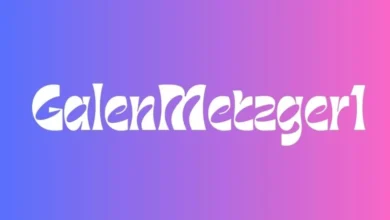What is Chancerne: Navigating the Nexus of Chance and Certainty

In the ever-evolving lexicon of the digital age, new terms emerge to capture the zeitgeist of technological and philosophical innovation. “Chancerne,” a term that intertwines the essence of chance with the stability of certainty. It heralds a paradigm shift in how we perceive and interact with the world around us. This article explores the multifaceted dimensions of chancerne, a concept that promises to redefine our approach to decision-making, creativity, and the pursuit of knowledge.
Unveiling Chancerne: A Conceptual Framework
Chancerne emerges at the intersection of randomness and determinism, a blend that challenges conventional wisdom. It encapsulates the idea that within the chaos of chance lies a pattern of certainty waiting to be discovered. This principle finds applications across various fields. It expands from quantum computing to predictive analytics, and even in creative endeavors like art and literature.
The Philosophical Underpinnings of Chancerne
Philosophically, chancerne advocates for a balance between accepting the unpredictable nature of existence. It recognizes the underlying order that governs the universe. It encourages a mindset that is both open to the serendipities of chance and grounded in the pursuit of knowledge and certainty. This duality mirrors the human condition, navigating the unknowns of life with a belief in purpose and meaning.
Chancerne in Technology
In the ever-evolving landscape of technology, the concept of chancerne emerges as a pioneering paradigm. It is famous particularly in the realms of artificial intelligence (AI) and machine learning. At its core, chancerne represents a revolutionary approach to processing information, introducing an element of chance into the typically deterministic world of algorithms.
AI systems leveraging chancerne algorithms stand at the forefront of this transformative wave. Unlike conventional methods that adhere to strict patterns and predefined rules, chancerne-powered algorithms embrace the unpredictability inherent in large datasets. They excel at discerning subtle correlations and uncovering hidden patterns that might elude traditional algorithms, turning randomness into valuable insights.
One of the key applications of chancerne in technology lies in its ability to navigate the intricacies of big data. In sectors such as finance, healthcare, and environmental science, where massive datasets are the norm, chancerne algorithms offer a unique advantage. By introducing an element of randomness, these algorithms can identify trends and anomalies that may go unnoticed in a deterministic framework.
Unpredictability Advantage: Chancerne algorithms thrive in the unpredictability of large datasets, uncovering correlations and patterns that traditional methods might miss.
Big Data Navigation: Particularly valuable in sectors dealing with big data, chancerne algorithms excel at identifying trends and anomalies, providing insights that drive informed decision-making.
Predictive Analytics: Chancerne’s application in predictive analytics enhances the accuracy of forecasts, impacting diverse fields such as finance, consumer behavior, and climate science.
Industry Revolution: The integration of chancerne into technology infrastructure has the potential to revolutionize industries, offering adaptive and responsive systems for enhanced efficiency.
Chancerne and Creativity
Creatively, chancerne inspires artists and writers to harness the power of randomness in their work, blending it with deliberate intention to create something uniquely compelling. It champions the idea that breakthroughs often occur at the edge of chaos and order, where the unexpected meets the meticulously planned. This approach has given birth to new genres and styles that challenge audiences to find meaning in ambiguity.
The Chancerne Principle in Decision-Making
Adopting chancerne in decision-making processes signifies a departure from rigid, formulaic approaches. It involves leveraging both data-driven insights and intuition to navigate complex situations. This dual approach enhances strategic planning, making organizations more agile and innovative in the face of uncertainty.
Chancerne in Education
The incorporation of chancerne into educational philosophies prepares students to thrive in a world characterized by rapid change and uncertainty. It fosters a learning environment that values critical thinking, adaptability, and the ability to recognize patterns in seemingly random information. This holistic approach equips learners with the skills to succeed in diverse fields, from science and technology to arts and humanities.
Ethical Considerations in a Chancerne-Dominated World
As chancerne gains prominence, it raises important ethical questions. The reliance on algorithms that embody the chancerne principle necessitates a dialogue on privacy, data security, and the moral implications of AI decisions. It challenges societies to establish guidelines that ensure these technologies are used responsibly and for the greater good.
Chancerne and the Future of Work
The influence of chancerne on the future of work is profound. It heralds a shift towards careers that blend analytical skills with creative thinking, valuing employees who can navigate the ambiguity of chancerne. This evolution demands a rethinking of education and training programs to align with the competencies required in a chancerne-influenced economy.
The Global Impact of Chancerne
On a global scale, chancerne has the potential to bridge cultural and ideological divides. By emphasizing the interconnectedness of chance and certainty, it promotes a worldview that appreciates diversity and seeks common ground in shared human experiences. This perspective is crucial in addressing global challenges, from climate change to social inequality.
A Call to Action
Embracing chancerne requires a shift in mindset, from seeking comfort in predictability to finding joy in the journey of discovery. It invites individuals and organizations to be more experimental, to embrace failure as a stepping stone to innovation, and to view the future with optimism and openness.
Conclusion
Chancerne represents more than a novel term; it embodies a new way of thinking about and engaging with the world. As technology advances and our understanding of the universe deepens, chancerne offers a framework for navigating the complexities of the 21st century. By balancing the elements of chance and certainty, chancerne paves the way for a future that is both excitingly unpredictable and reassuringly knowable. In the dance of randomness and order, chancerne stands as a testament to human ingenuity and the endless possibilities that lie ahead.
FAQs
1. What does “chancerne” mean in the context of this article?
Chancerne is a coined term representing a fusion of chance and certainty, influencing technology, philosophy, and creativity.
2. How is it applied in artificial intelligence (AI) and machine learning?
Chancerne algorithms in AI excel at finding patterns in vast datasets, revolutionizing industries with unprecedented forecasting accuracy.
3. What role does it play in decision-making and strategic planning?
Chancerne advocates a dual approach, combining data-driven insights with intuition to enhance agility and innovation in decision-making.
4. How does it impact education and prepare students for the future?
Chancerne in education cultivates critical thinking, adaptability, and pattern recognition skills, enabling students to thrive in a rapidly changing world.
5. What ethical considerations arise with the increasing influence of chancerne?
The rise of chancerne prompts discussions on privacy, data security, and the responsible use of AI, challenging societies to establish ethical guidelines.




